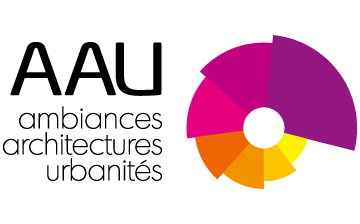StillMap – Still on the Map ! Les communautés du delta du Mississippi à l’épreuve de la disparition des sols.
StillMap – Still on the Map! Communities of the Mississippi River Delta facing the loss of soils.
Financement : Appel à projets IDEX Université Grenoble Alpes Initiatives de Recherche Stratégiques (IRS) – Année 2019/2020
Responsable(s) scientifique : UMR Pacte : porteur de projet Jennifer Buyck. Pour AAU-CRESSON : Jean-Paul THIBAUD, Nicolas TIXIER
Contrat de recherche terminé en décembre 2022
FR
Les communautés du delta du Mississippi à l’épreuve de la disparition des sols.
- PACTE
- AAU-CRESSON
- LITT&ARTS
- PACTE : Jennifer BUYCK, Pierre Oliver GARCIA, plus, un post-doc (en cours de recrutement)
- AAU-CRESSON : Jean-Paul THIBAUD, Nicolas TIXIER
- LITT&ARTS : Isabelle KRZYWKOWSKI, Lindsey WAINWRIGHT.
Résumé
« Still on the Map ! » prend pour cadre d’étude le delta du Mississippi quinze années après le passage de l’ouragan Katrina et environ cinq ans après la mise en service des principales nouvelles infrastructures de protection contre le risque d’inondation « centennale ».
Exprimé dès son titre – un énoncé de résistance/résilience scandé par nombre d’habitants lors des manifestations à caractère écologique en Louisiane –, ce projet de recherche ambitionne de décrire les liens et « attachements » (LATOUR, 2017) que différentes communautés du delta entretiennent avec leur milieu géographique en situation de forte bascule écologique, intégrant dans la définition des écosystèmes les infrastructures naturelles et artificielles du bassin hydrographique comme autant d’acteurs socio-politiques à part entière.
Dans un contexte où le sol du delta s’enfonce peu à peu dans la mer, chaque heure c’est l’équivalent en surface d’un terrain de football qui est définitivement inondé. Ainsi entre 1930 et 2010, le delta du Mississippi a perdu environ le quart de sa masse terrestre (HEMMERLING, 2017). Sans doute n’avait-on pas bien mesuré combien ses infrastructures et projets d’aménagement ne seraient pas sans conséquence et surtout combien le Mississippi est le maître en son delta. Territoire devenu inhabitable et pourtant encore habité, le delta est une zone urbaine diffuse dont la ville la plus peuplée est La Nouvelle Orléans mais qui se caractérise aussi par un réseau de villes petites et moyennes, pour un total de 2,2 millions d’habitants. Quel devenir et potentiels de résilience pour les communautés du delta face à la disparition des sols à l’oeuvre ?
Tout comme Learning From Las Vegas (VENTURI, 1977) qui a fondé son analyse sur un séjour collectif de 10 jours sur place, notre projet s’organise autour d’un atelier de recherche in situ d’une durée d’environ 20 jours. Soit un format court in situ qui demande une importante préparation en amont, la mobilisation de relais sur place et la production au fil de l’expérience de représentations et d’archives innovantes. Celles ci seront le support d’une future exposition.
D’un point de vue méthodologique, notre travail se décompose en trois tâches auxquelles l’ensemble de l’équipe participe :
- WP1 · décryptage de l’écosytème métropolitain du delta du Mississippi ;
- WP2 · analyse in situ et arpentage des écosystèmes urbains du delta du Mississippi ;
- WP3 · production de représentations et d’archives innovantes des communs du delta du Mississippi.
EN
Communities of the Mississippi River Delta facing the loss of soils.
Funding: IDEX Université Grenoble Alpes
Partnering structures:
- PACTE
- AAU-CRESSON
- LITT&ARTS
Team:
- PACTE: Jennifer BUYCK, Pierre Oliver GARCIA and one postdoc (currently being recruited)
- AAU-CRESSON: Jean-Paul THIBAUD, Nicolas TIXIER
- LITT&ARTS: Isabelle KRZYWKOWSKI, Lindsey WAINWRIGHT.
“Still on the Map!” takes place in the Mississippi River Delta fifteen years after Hurricane Katrina, and around five years after the implementation of the main new protection infrastructures against “centennial” flooding risk.
From the title alone – a statement of resistance/resilience chanted by many inhabitants during ecological demonstrations in Louisiana – this research project aims to describe the connections and “attachments” (LATOUR, 2017) that different communities of the delta have with their geography in a situation of strong ecological turn, integrating in the definition of ecosystems the natural and artificial infrastructures of the watersheds considered as socio-political actors in their own right.
Considering that the delta soil is slowly sinking into the sea, the equivalent surface of a football field is permanently flooded each hour. Therefore, between 1930 and 2010, the Mississippi River Delta has lost around a quarter of its terrestrial mass (HEMMERLING, 2017). We must not have measured how much the development infrastructures and projects would have consequences, and mostly how the Mississippi River is the master in its delta. As a territory that became uninhabitable and still inhabited, the delta is a diffuse urban area, whose most populated city is New Orleans. It is also characterised by a network of small and medium-sized cities, totalling 2.2 million inhabitants. What resilience-related future and potentials do the delta communities have in the face of the current loss of soils?
As with Learning From Las Vegas (VENTURI, 1977) and its analysis based on a 10-day collective stay on site, our project is organised around an in-situ research workshop of around 20 days. It thus means that it is a short, in-situ format that requires significant preparation beforehand, as well as the mobilization of relays on the field and the production of innovative representations and archives throughout the experience. The latter will be the base for a future exhibition.
From a methodological point of view, our work is divided into three tasks in which the team as a whole participates:
- WP1 · decoding the metropolitan ecosystem of the Mississippi River Delta;
- WP2 · in-situ analysis and land survey of the urban ecosystems of the Mississippi River Delta;
WP3 · production of innovative representatives and archives of the public areas of the Mississippi River Delt.
Retrouvez tous les contrats de recherche de l'équipe CRESSON
